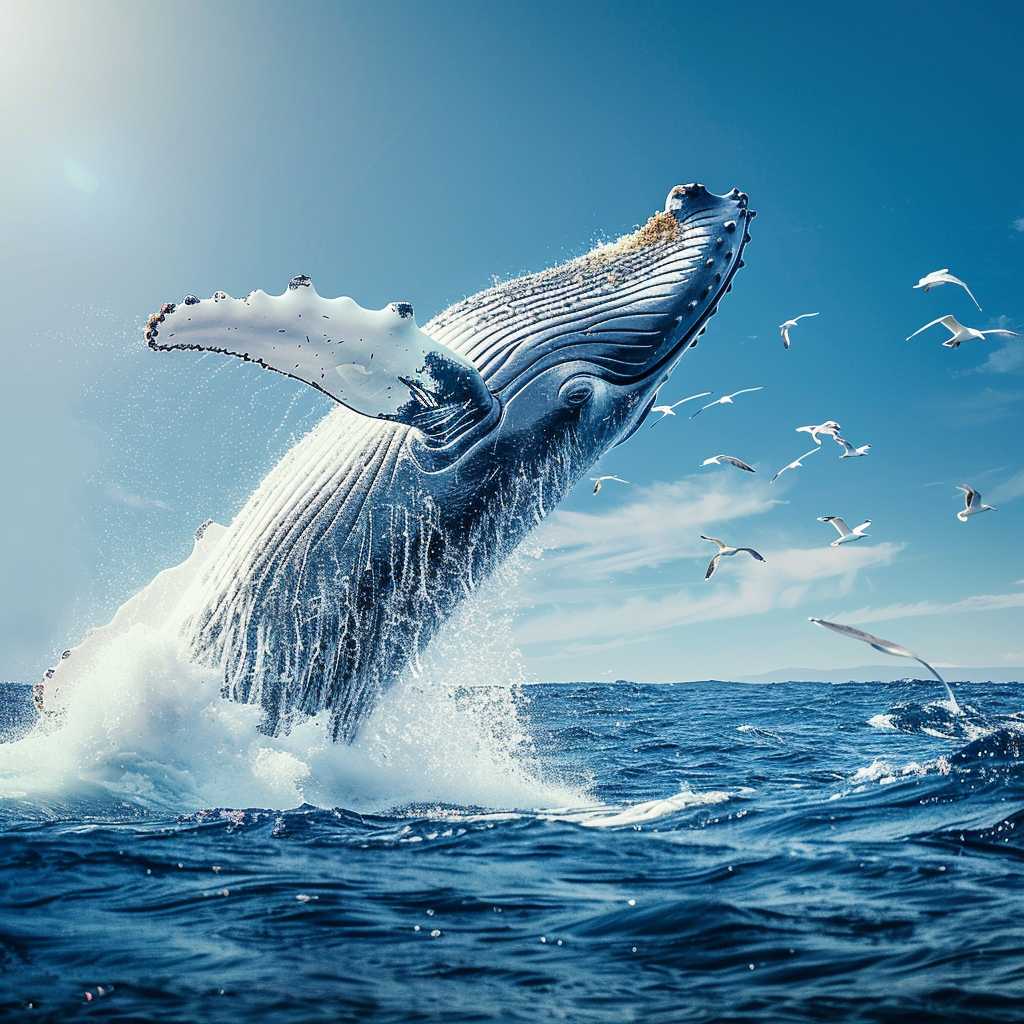# Understanding Humpback Whales: Gentle Giants of the Sea
Humpback whales, known by their scientific name Megaptera novaeangliae, are large marine mammals that belong to the baleen whale family. Characteristic for their spectacular breaching displays, unique feeding strategies, and haunting songs, these marine giants draw both scientific and public interest. Let us dive deep into the world of humpback whales, examining their biology, behavior, and the challenges they face in the modern oceans.
Introduction to Humpback Whales
The humpback whale is one of the most recognizable and well-studied of all the cetaceans. With their distinctive body shape, marked by long pectoral fins and a knobbly head, they can be found in oceans around the world. Their acrobatics, unique vocalizations, and intricate behaviors have endeared them to many and catapulted them to be icons of marine conservation efforts.
Physical Description and Characteristics
Adult humpback whales typically range from 39 to 52 feet in length and weigh about 28-33 tons. The females are usually larger than the males, a common sexual dimorphism among baleen whales. The name ‘humpback’ comes from the distinct hump on their back, visible when they arch just before a deep dive. Coloration varies from a predominantly black to grey with variable amounts of white on their pectoral fins, underbellies, and tails. Each whale has unique patterns on the underside of its tail flukes that act like fingerprints to identify individuals.
Migration Patterns
Humpback whales undertake one of the longest migrations of any mammal on Earth, often traveling great distances between their feeding and breeding grounds annually. During summer months, humpbacks are commonly found in high-latitude feeding areas such as the polar seas where they feast upon krill and small fish. When winter comes, they travel towards tropical or subtropical waters for breeding and calving. These migratory routes can span up to 5,000 miles each way.
Feeding Habits
One of the signature traits of these whales is their unique feeding strategy known as ‘bubble net feeding’, primarily observed in Alaska. This intricate group hunting technique involves humpbacks blowing bubbles in a circle or ‘net’ around a school of fish. The coordinated spiraling ascension intertwines with vocal signals to herd prey into dense clusters, allowing whales to surge from below with mouths agape for a bounteous meal.
Vocalizations and Communication
Male humpbacks are famous for their songs—complex sequences of moans, howls, cries, and other noises that can linger for hours. These songs play a role in mating behaviors but could also serve additional purposes such as echolocation or signaling. Female humpback whales also communicate using an array of social sounds particularly when interacting with their young.
Reproduction and Life Cycle
Breeding typically occurs every two to three years with pregnancy lasting for about 11 months. Mothers tend to give birth in warmer waters where calves earn vital energy stores from their mother’s rich milk before embarking on the taxing journey to their colder feeding areas. Calves remain close to their mothers for the first year of life before becoming more independent though some may stay with their mother for longer periods.
Conservation Status
Whaling severely depleted humpback whale populations by the early 20th century, but international protection measures including the 1966 Moratorium on Whaling have facilitated significant recovery since then. Today, while still on the International Union for Conservation of Nature’s (IUCN) Red List classified as ‘Least Concern’, they continue to face threats from habitat loss, entanglement in fishing gear, ship strikes, noise pollution, and climate change.
Human Interaction and Cultural Impact
Humpbacks have left a substantial mark on human culture often becoming symbols of conservation success stories as well as focus points for marine tourism industries such as whale watching expeditions. Their migratory patterns match many coastal cultures’ calendars around the world driving legends storytelling and inevitably leading into our poetry arts and collective imagination.
Notes
Image description: A majestic humpback whale breaches out of gleaming blue waves against a clear sky backdrop with seabirds flying around—the whale’s white underbelly contrasts sharply with the dark ocean water as sunlight glimmers off its wet skin.
